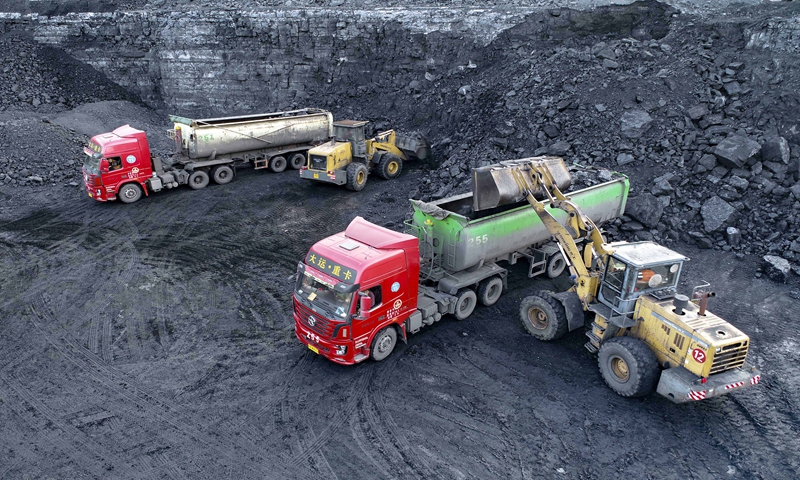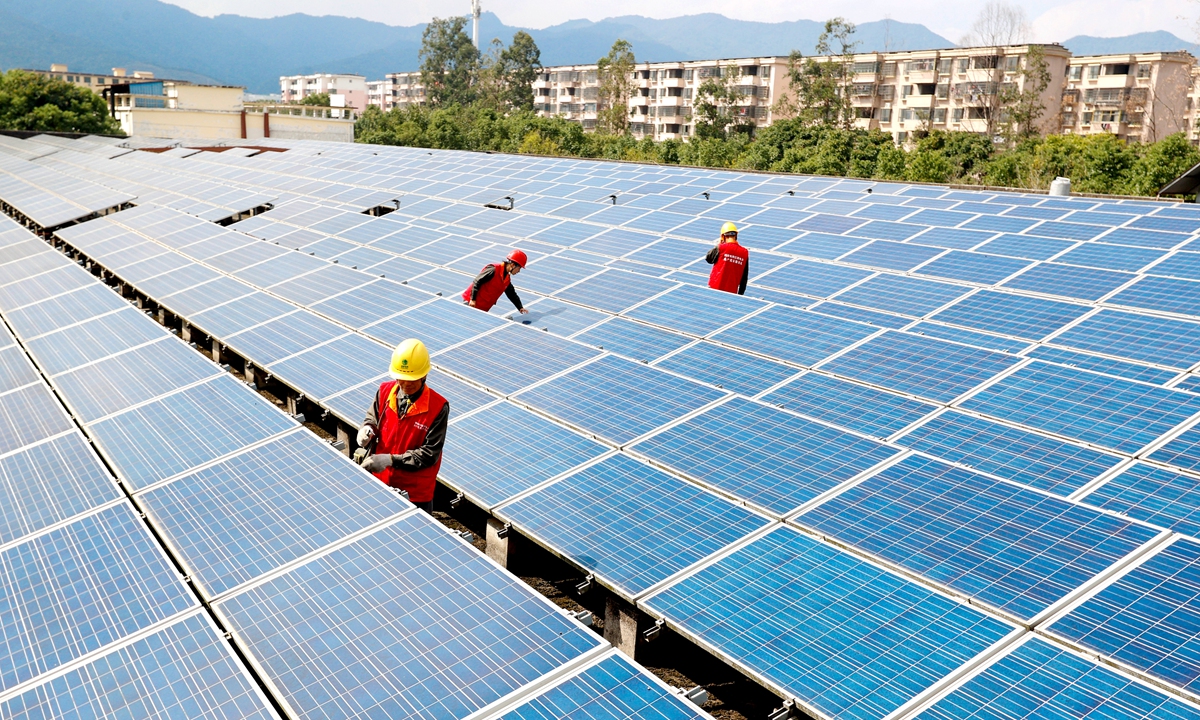
A coal mine in Ejin Horo Banner, North China's Inner Mongolia Autonomous Region on October 20, 2021 Photo: VCG
China's top economic planner and energy administrator on Wednesday issued a notice about upgrading coal-fired power plants nationwide, in which they banned the demolition of obsolete and closed coal-fired power units, as part of efforts to support the country's carbon emissions reduction goals.
The plants will serve as standby power sources during emergencies and peaks, according to the notice jointly issued by the National Development and Reform Commission (NDRC) and the National Energy Administration (NEA), underscoring China's intensifying efforts to meet environmental protection goals while ensure power supplies after recent shortages.
Obsolete and closed coal-fired power units "shall not be torn down, but they may be shut down," the NDRC and the NEA said.
In principle, all coal-fired power units should create the conditions to be transformed into standby emergency power suppliers and peaking power sources. Dismantling the units will require approval from the NDRC and the NEA, read the notice.
The overall transformation scale of coal-fired power units during the 14th Five-Year Plan (2021-25) should surpass 350 million kilowatts, the notice said.
By 2025, coal-fired power plants must adjust their consumption rate to an average of 300 grams of standard coal per kilowatt-hour, it noted.

Workers install solar panels on the roof of an industrial building in Xiajiang county, East China's Jiangxi Province on October 25, 2021. The distributed solar power plant can generate electricity for industrial use or sell surplus power to the grid. Photo: VCG
The plan came after the COP26 climate talks, where China reaffirmed its goal of achieving a carbon peak before 2030 and carbon neutrality by 2060.
Even if China's coal output rises amid a nationwide power shortage, it does not signal a return to reliance on coal-fired power, analysts stressed.
The notice was tailored to support the structural optimization and upgrading of the energy industry, improving the cleanness of coal-fired power units, and facilitating the clean and low carbon transformation of the power sector.
The challenge now is how to make coal-fired power more flexible, as the generation and grid connections of wind and solar power plants have put increasing pressure on peak shaving in the grid.
Global Times





